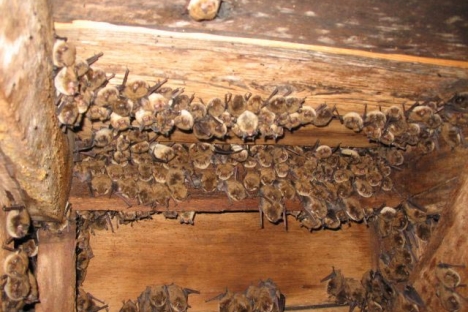WANTED: Public reports of bat activity during winter months
Our local batsare gone for the winter and their whereabouts is currently unknown in the Kootenay region.
Biologists are requesting reports from citizens of bats found hibernating during the cold season.
“During summer, we receive a lot of reports from residents who have bats roosting on their property in houses, barns or sheds” explains Juliet Craig, Coordinating Biologist for the Kootenay Community Bat Project.
“However, we have very little information about where these bats go in winter.”
The goals of the Kootenay Community Bat Project are to respond to public reports of roosting bats in buildings, provide information on bat houses and promote citizen scientist to monitor bat populations through the Annual Bat Count.
This project is funded by the Columbia Basin Trust, Habitat Stewardship Program, Habitat Conservation Trust Foundation, and Columbia Valley Local Conservation Fund in response to increasing conservation concern for bats.
In the winter, local bats have been reported to hibernate in caves, rock crevices or abandoned mines, but only a few specific locations in the Kootenay region are known.
There is increasing anecdotal evidence that they might hibernate either singly or in small numbers in human created habitat such as buildings, chimneys, firewood piles, etc.
The Little Brown Bat (Myotis lucifugus) was emergency listed as Endangered on the federal Species at Risk Act (SARA) in 2014 because of sudden and dramatic declines across the eastern portions of the range.
These declines are the direct result of white-nose syndrome (WNS), a fungal disease that has killed millions of bats in eastern North America during their winter hibernation.
WNS is currently not detected west of the Rockies, but is predicted in British Columbia during the next five to ten years. One of the first steps to managing the disease impacts is to better understand bat behaviour and habitat use in the winter.
By locating the winter hibernation sites, biologists hope to prevent inadvertent disease introduction and protection of these sites will be essential for recover of populations should disease arrive and devastate local populations.
“Programs like the Kootenay Community Bat Project are in place to collect information from the public on bat populations with the intention of aiding in the conservation of bats and their habitats” continues Craig.
“Reports from the public about bat hibernacula are extremely important for bat conservation in the province”.
Residents from the Kootenays are urged to report winter bat sightings to the online government reporting tool
Information of particular importance is the location of the roosting sites (provide exact location so the site can be located again in future years), unusual behaviour such as flying during the day, how many bats were at the site, and a general description.
It is very important that the bats should not be disturbed and so in most cases just select “bats” for the Species field and enter the number observed under “Unknown age and sex”.
If these sites are from caves or mines, we also encourage you to contact http://www.BatCaver.org, a citizen science effort by Alberta and BC cavers to help locate bats hibernating in underground locations.
For more information on bats in the Kootenays, see www.kootenaybats.com.


























Comments